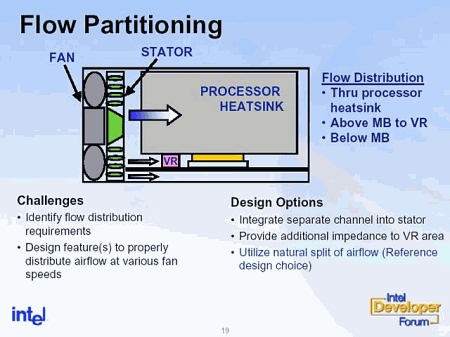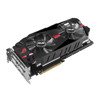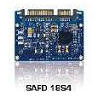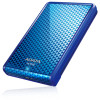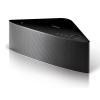Last year the mainboard market developed evolutionarily. All the
innovations in the logic architecture - spreading of boards with an integrated
DDR400 dual-memory controller or AGP 8x support - can't be considered a
revolution. Even the Serial ATA controller was integrated very softly,
and it was demanded on the mass market only by the autumn.
Next year is promising to be less conservative and is going to bring the changes we haven't seen since the AGP bus integration. The rumors and vague facts about the upcoming revolution of the desktop PC platform turned into the final specs of the new mainboard form-factor family BTX 1.0, which gives a clear idea that the PCI and AGP bus will soon follow the ISA.
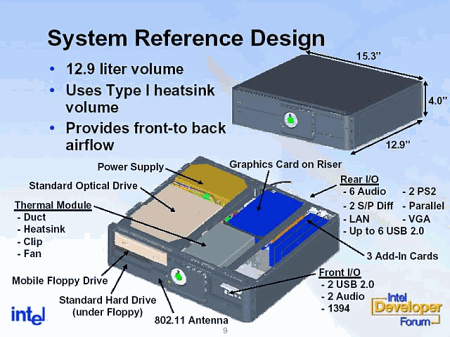
The transition to the new mainboard form-factor is not a whim: new buses and interfaces do not "feel comfortable" within the frames of the current ATX specs; the requirements for the thermal system balance, PC case shapes and their noise characteristics changed. However, at the beginning, the BTX form-factor guarantees compatibility with all previous solutions, for example PC cases of traditional dimensions. But in future, the new form-factor and its versions will let shift to more compact, various and even queer PC case shapes without deviating from the standard.
The list of advantages of the BTX form-factor (Balanced Technology Extended), earlier known as Intel Big Water, includes support of low-profile mainboards, an optimized layout of components with proper thermo balance and air ways, scalable board sizes with a possibility to use minute power supply units; an optimized structure of boards fasteners and higher-quality mechanical characteristics of all solutions.The transition to the new BTX form-factor will become more urgent by the middle of 2004. The topology of modern mainboards will also be changed by that time. No one knows for sure when PCI and AGP slots are going to be replaced with the PCI Express, but judging by the prototypes of various peripherals and mainboards showcased at IDF Fall 2003, the IT industry is ready for such transition. There's not much left to be done: the developers are to bring last touches into the standards' specs, provide the mutual certification, and make end-users interested in such transition.
At the moment there are several BTX versions that differ mostly in the board width: Standard BTX - the width is similar to ATX - 325.12 mm, microBTX - 264.16 mm wide, and low-profile picoBTX - 203.20 mm wide. The new for-factor accounts for various new buses and interfaces - PCI Express, Serial ATA etc. BTX boards will be attached to chassis with special SRM (Support and Retention Module) that supports optimal cooling for system components, especially for the processor. The modules are described in detail in the standard specifications.
One more key innovation: in the BTX specs coolers are called Thermal Modules. They play the key role in removing heat from key system components. This module consists of a CPU cooler and guides for air flow optimization. There are two types of such modules developed for today - full-size and low-profile. 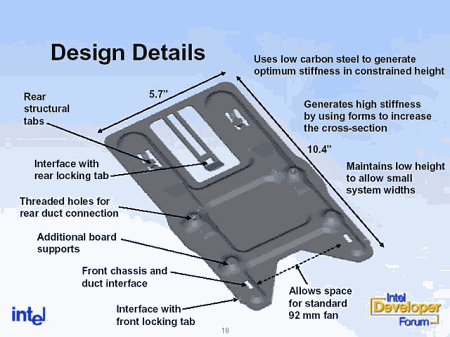
But in spite of all prospects promised by the new form-factor and new technologies, the current platforms will remain on the market at least six months more. In this respect, the conservative attitude of chipset developers and makers you could notice last year, at least for the Intel Pentium 4 platform, is praiseworthy. If you remember, in 2002 when a user purchased a system with DDR333 support he realized that such system wasn't going to lead for a long time. Plus, if he wanted to be up-to-date, he had to be ready to replace the whole system including memory, mainboard, and processor.
Positioning of chipsets for Intel's processors in 2003 was much more steady and predictable. Thus, i875 (Canterwood) and i865 (Springdale) families announced yet in spring are still the most powerful logic from Intel. The support of Pentium 4 with Hyper-Threading, DDR400 and Serial ATA interface are still needed. Even if you buy a system based on these chipsets today, you can be sure that it's still the best one though the solutions were announced almost a year ago!
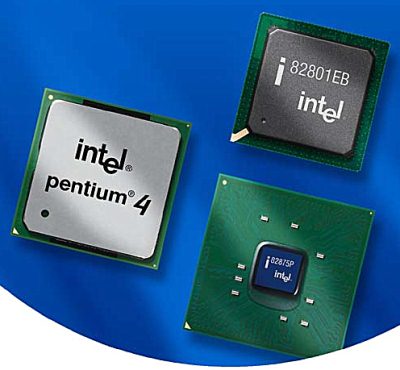
For the beginning of 2004 Intel offers the following logic for desktop PCs. For the value sector it positions the i845 line. Whatever the board makers can say about their solutions on i845 chipsets for Pentium 4 with 800 MHz FSB, the capabilities of such systems having the dated ICH4 south bridge are very modest, even as compared to the budget-level i848P, which supports the single-channel DDR400 relative to the i865.
All kinds of the i865 line now belong to the mass and high-performance mainboard sector, with the high-end i875P crowning this niche; in most cases we can say that the i865PE also belongs to this market.
In Q2, when the Prescott based CPUs come onto the scene, the leading Canterwood chipset will be replaced with Alderwood, and the i865 family will be replaced with Granstdale. The new chipsets will support both memory types - DDR2-400/533 and DDR333/400. It's expected that the high-performance discrete Grantsdale-P will support only DDR2, while the integrated version Grantsdale-G will feature support for both DDR2 and DDR.
The mainstream Grantsdale-GV and Grantsdale-GL are also expected to come. The most obvious time of their arrival is Q3 2004. The Grantsdale-GV won't support external graphics in spite of the PCI Express x16 slot (as compared to AGP, PCI Express x16 is not an exclusively graphics interface). The Grantsdale-GL won't support Hyper-Threading and PCI Express x16, - it will feature only PCI Express x1. By the way, the new Northway Gigabit Ethernet (GbE) chip will support the PCI Express x1. It's anticipated that the whole Grantsdale family will support up to 4 GB of memory.
The highest-performance Alderwood chipset will be announced for the
first time in Q2 2004. The chipset will support 800 MHz FSB, dual-channel
DDR2 with ECC.
| Bridge | Type | Alderwood | Grantsdale-P | Grantsdale-G | Grantsdale-GV | Grantsdale-GL |
| MCH/
GMCH |
FSB | |||||
| 1066 MHz | - (until Tejas) | - (until Tejas) | - (until Tejas) | - (until Tejas) | - | |
| 800 MHz | + | + | + | + | - | |
| 533 MHz | - | + | + | + | + | |
| 400 MHz | - | - | - | - | - | |
| Rate | 6.4 GB/s | 6.4 GB/s | 6.4 GB/s | 6.4 GB/s | 4.2 GB/s | |
| PC case | ||||||
| LGA775 | + | + | + | + | + | |
| mPGA478 | - | - | - | - | - | |
| Memory | ||||||
| DDR2-533 | + (FSB 800) | + (FSB 800) | + (FSB 800) | + (FSB 800) | - | |
| DDR2-400 | + (FSB 800) | + (FSB 800) | + (FSB 800) | + (FSB 800) | - | |
| DDR400 | - | + (FSB 800) | + (FSB 800) | + (FSB 800) | + (FSB 533) | |
| DDR333 | - | + (FSB 533/800) | + (FSB 533/800) | + (FSB 533/800) | + (FSB 533) | |
| DDR266 | - | - | - | - | - | |
| 2-channel memory mode | + | + | + | + | + | |
| 1-channel memory mode | ? | + | + ? | + ? | + ? | |
| Slots | ? | 4 DIMM | 4 DIMM | 4 DIMM | 2 DIMM | |
| Rate | ? | 8.5 GB/s | 8.5 GB/s | 8.5 GB/s | 6.4 GB/s | |
| Maximum size | 4 GB | 4 GB | 4 GB | 4 GB | 2 GB | |
| ECC | + | - | - | - | - | |
| Hyper Threading |
+ | + | + | + | - | |
| AGP | - | - | - | - | - | |
| PCI Express x16 | + | + | + | + | - | |
| PCI Express x1 | + | + | + | + | + | |
| Integrated graphics | - | - | Intel Extreme Graphics 3 | Intel Extreme Graphics 3 | Intel Extreme Graphics 3 | |
| CSA | - | - | - | - | - | |
| Release | K2 2004 | K2 2004 | K2 2004 | K3 2004 | K3 2004 | |
| ICH | ICH | ICH6 / ICH6R | ICH6 / ICH6R | ICH6 / ICH6R | ICH6 / ICH6R | ICH6 / ICH6R |
| USB 2.0 | 8 | 8 | 8 | 8 | 8 | |
| ATA66/100 | 1 | 1 | 1 | 1 | 1 | |
| Serial ATA 150 | 4 | 4 | 4 | 4 | 4 | |
Speaking about the positive changes that took place last year between Intel and its Taiwanese partners dealing with chipsets for Pentium 4, we should mark the fundamental summer reconciliation with VIA. Yet since licensing the Pentium III bus the companies often brought patent suits in many countries. SiS and ALi got licences for 800 MHz buses of Pentium 4 without any problems, by extending the previous long-term cross-licence agreement (not to mention ATI); at the same time, the problems with VIA Technologies were solved only in summer, after all claims were satisfied.
All three Taiwanese companies launched their chipsets with 800 MHz Pentium
4 support, and by the end of 2003 all of them had chipsets supporting dual-channel
DDR and Hyper-Threading.
 |
 |
SiS655TX and VIA PT880 were successfully launched and in Q4 2003 they got into the mass market; the time for the universal chipset ALi M1683 is yet to come. Early in 2004 VIA released its PT890 supporting FSB 800 MHz, PCI Express and dual-channel DDR400 with ECC, DDR2 400/533/667, and the announcement of its integrated version - PM890 that features UnChrome 2 GFX graphics is just around the corner.
The delay in release of the chipsets with similar functionality from Taiwanese companies exceeded six months, and despite the lower prices, such solutions won't get a good marketshare. However, there's some time before the Prescott based chipsets appear on the market, and it's possible that Intel's solutions with the dual-channel DDR support will have to grant a part of their marketshare.
The chipsets for AMD K7 didn't develop much during 2003. The basic versions of the leading chipsets - SiS746, NVIDIA nForce2, VIA KT400 - were known yet at the end of 2002, especially because the realized (or simply announced) support for DDR400 and 333/400 MHz FSB in the following chipsets - SiS748, nForce 2 Ultra 400 and KT600 - wasn't a breakthrough.
Nevertheless, when AMD announced the roadmap for the K7 platform up to 2005 and even expressed its desire to port it to the 90nm fab process, we thought that further development of chipsets for future Athlon XP was quite possible. If the Athlon 64 chips get popular and reach affordable prices in a very short period of time, it won't be needed to develop chipsets for the K7 line (that will automatically become value); but it's quite possible that we can get chipsets for Athlon XP with the PCI Express support.
The current main heroes from AMD and its most promising processors are 32/64bit Athlon 64. The manufacturers were waiting for the mass release of the new processors quite a long time - the official announcement of the Opteron family was made a year after first boards based on chipsets for Hammer CPUs were released! But such a long period allowed improving quality and let the companies prepare well for the new platform.
It's traditional for AMD to pin hopes to its partners' support. Thus, you can find the AMD 8000 chipset in some server boards from a few companies, but we can't consider it widely popular or even a base for the desktop platform.
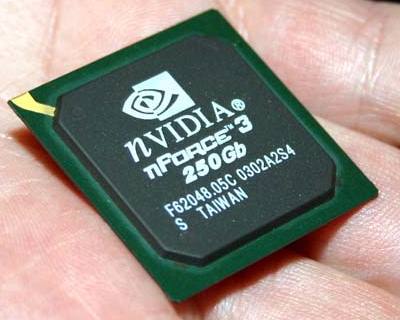
AMD's partners that provided a good support for K7 chips in their time
also developed chipsets for Opteron, Athlon 64 and Athlon 64 FX. At the
moment we have Apollo K8T800 from VIA Technologies that supports one or
two processors, SiS755FX from SiS with similar features, and nForce3 Professional
family with 5 single-chip solutions - nForce3 250 Gb, nForce3 250, nForce3
Pro 150, nForce3 150 and nForce3 Go 150 for mainboards in desktop and mobile
PCs and professional workstations.
| nForce3 250 Gb | nForce3 250 | nForce3 Pro 150 | nForce3 150 | nForce3 Go 150 | |
| CPU | Athlon 64 | Athlon 64 FX | Athlon 64 | ||
| Socket | Socket 754 | Socket 940/754 | Socket 754 | ||
| Bus | HyperTransport | ||||
| Line rate | 1.6 Gb/s per pin | ||||
| Bus width | 16 Gbit x 16 bit | ||||
| Throughput | 6.4 GB/s | ||||
| AGP | 8X / 4X | ||||
| HDD | Serial ATA + Ultra ATA | Ultra ATA | |||
| Serial ATA PHY | 2 | 2 | - | - | - |
| External PHY (option) | 2 | 2 | - | - | - |
| Ultra ATA | 33/66/100/133 | ||||
| Ultra ATA | 2 channels | ||||
| RAID | 0 and 1, 0+1 | ||||
| PCI | V2.2, up to 6 slots | ||||
| USB | USB 2.0, 8 ports | ||||
| Ethernet | 10/100/1000 | 10/100 | |||
| AC'97 | + | ||||
| PowerNow! | - | - | - | - | + |
I must say that the new platform will soon face a lot of difficulties. To keep up to date, the developers will have to speed up bringing the DDR2 memory support into the market, force development of boards with PCI Express 16x bus and PCI Express 1x slots; and sooner or later it will require shifting to the BTX form-factor.
I can't pass by ATI Technologies which has already made its first steps on the market of chipsets for desktop PCs. It has already released one chipset and plans on working much harder on this market.
The company is going to provide support not only for DDR2 or PCI-Express. First of all, the company is going to enter the market of chipsets for AMD Athlon 64. Secondly, ATI plans on producing discrete chipsets; the first samples are expected in Q1 2004, and the mass production will start by summer.
The new south bridges SB400 and SB450 will feature PCI Express bus support
(also as a bridge interface) and Azalia audio technology instead of the
AC97 in the SB450.
| K4 2003 - K1 2004 | K2 - K3 2004 | K4 2004 | |
| Intel | RS350: Prescott, 800 MHz FSB, 2 x DDR400, int. DirectX 8.1 graphics,
AGP 8x, mass production planned for Q1 2004
RC350: single-channel DDR400 version |
RS400: higher-clocked FSB, 2 x DDR-2 667 / DDR400, integrated DirectX 9 graphics, PCI Express. Samples planned for Q1, mass production for the middle of the year | RL400: higher-clocked FSB, 2 x DDR-2 667, integrated DirectX 9 graphics, PCI Express Samples planned for Q2, mass production for Q4 |
| AMD | - | RS480: DDR2, integrated DirectX 9 graphics, PCI Express. Samples
planned for Q1, mass production for the middle of the year
RX480: discrete version |
- |
| South Bridge | SB300: A-Link bus, 2 x SATA, 2 x ATA/133, 8 x USB 2.0, 3Com 10/100 MAC, samples planned for October, mass production for Q1 | SB400: PCI Express, 4 x SATA, 2 x ATA/133, 4 x PCI Express x1, Samples planned for Q1, mass production for Q2 | SB450: PCI Express, Azalia Dolby 7.1 |
No doubt, this year will be much more interesting than the last one; we will witness the dynamically developing mainboard market and get a lot of intriguing news.
Read also: Barebone
systems and desktop PC evolution
Write a comment below. No registration needed!

